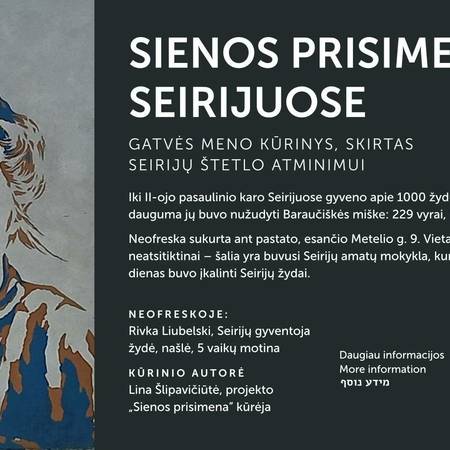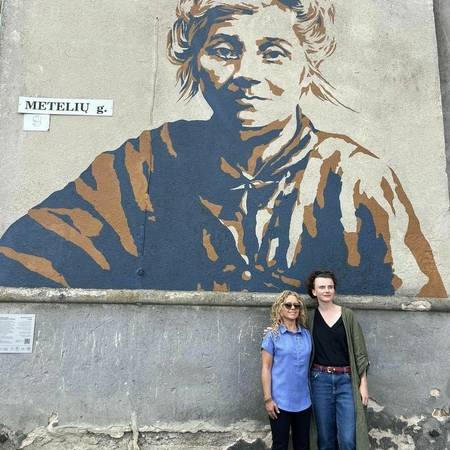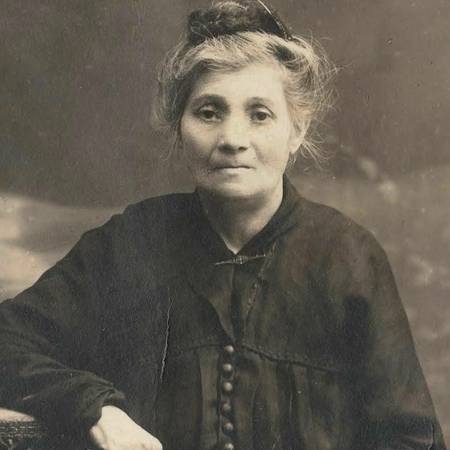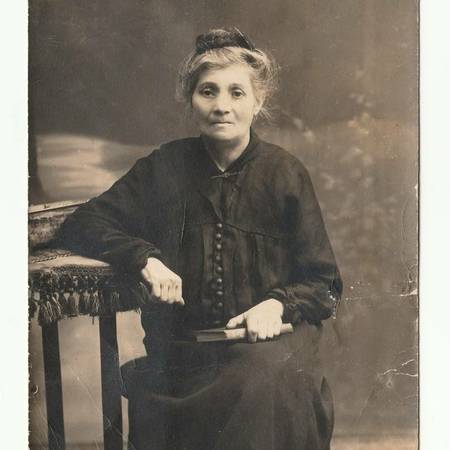Lina Šlipavičiūtė's street art project "Sienos prisimena", which has been ongoing since 2019, brings back the memory of the Jews of Lithuanian cities and towns to the streets. Neo-frescoes are created based on authentic photos and adorn the walls of Vilnius, Merkina, Salantai, Utena, Švėkšna, Molėtai. From 2023 in the summer they were joined by Seiriyas. The neofresco was created on a building located on Metelio st. 9, walls. The place was not chosen by chance - the former Seirijui crafts school stands nearby, where in 1941 in September, the Jews of Seirije were imprisoned for several days before the shooting.
Series up to World War II
The walls of the town of Seirijui remind us of a diverse, complex and changing life. In addition to Lithuanians, Poles and Germans here since the 18th century. Jewish community also lived in the beginning. Before World War II, it had about 1,000 people. The Jews owned a synagogue, a cloister, a school, a library, a bank, a court, several dozen warehouses, artisans toiled here, and light industry workshops operated. Vire had an active life: religious holidays were celebrated, cultural and sports events were held, markets and fairs were bustling, music was played in dance halls and maypoles, and in the cold season - in the ice rink. There were taverns, sugar shops, and a hotel. People who differed in both lifestyle and religious views, but who were connected by close economic ties, work relations, cultural life, and social activities, met daily in the seiris.
The neofresco depicts Rivka Lubelski, a woman who lived in Seiryi. According to L. Šlipavičiūtė, this is the only portrait in this project made by painting! Also, this is one of the few cases when relatives of the woman depicted in the portrait are known to be currently living in Israel!
We only know the family history of the woman immortalized in the neofresco, Rivka Liubelski, thanks to her great-granddaughter Idid Levavi Gabbai. She shared photos of her great-grandparents and relatives who lived in Seiri before the war. Rivka Lubelski became a victim of the Holocaust with her relatives. She, along with all the Jews of Seirije (229 men, 384 women and 340 children) were killed in the Baraučiške forest in 1941. September 11
One of her sons, Meir Levavi, emigrated to Palestine before the start of the war, and after some time, in 1932, he persuaded the youngest sister, Masha Lubelski, to leave as well. As a result of their emigration, the family history continues.
You can find a table with all the information next to the work, and the QR code leads to the page created for it: https://www.lazdijukulturoscentras.lt/informacija/sienos-prisimena-seirijuose/?fbclid=IwAR3XkI5gaRdB-IjISmHhZVTenLq28ooC5guG37i-x-4vCbVaKt8cKeq5XIs
The project is financed by the Lithuanian Council of Culture
The project is implemented by the Lazdijai Cultural Center
Project partners:
Lithuanian Jewish community
Seirijus Antanas Žmuidzinavičius Gymnasium
Lazdijai tourism information center















Reviews